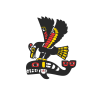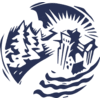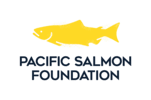KIRO-TV News, May 15 2015
 OLYMPIA, Wash. — Record low snowpack and worsening conditions in watersheds has led Gov. Jay Inslee to declare Washington State to be in a drought.
OLYMPIA, Wash. — Record low snowpack and worsening conditions in watersheds has led Gov. Jay Inslee to declare Washington State to be in a drought.
The drought conditions around the state are the most serious in about 10 years. Click here to see a map.
“We’re really starting to feel the pain from this snowpack drought,” Inslee said. “Impacts are already severe in several areas of the state. Difficult decisions are being made about what crops get priority water and how best to save fish.”
Last month, state officials said almost half the state is in a drought condition. Currently, 24 of Washington’s river basins are in a declared drought emergency.
State and ecological officials have been sounding the alarm for months about record low snowpack. Snowpack is like a frozen reservoir for river basins that usually accumulates over the winter and then slowly melts through the spring and summer, providing a water supply for rivers and streams.
Snowpack has dropped to just 16 percent of normal levels statewide.
On May 1, the Natural Resources Conservation Service found 11 snow sites in Washington that are snow free for the first time ever. Of the 98 snow sites, the Conservation Service measured in Washington, 66 of them are currently snow free.
The U.S. Geological Survey reported in April that 78 percent of streams statewide were running below or much below normal. Some were already at historic lows.
For farmers east of the Cascades, a warm and dry winter means crops are maturing early. They can also only use 60 percent of the water they need to grow because irrigation districts cutting off water.
“We don't have good news. It's drier. It’s warmer. We're not going to see the type of precipitation that we were hoping for this year,” Maia Bellon with the Washington Department of Ecology said. "We've calculated that we will have the lowest river flows in the state of Washington that we've had in the last 64 years."
The Washington Department of Agriculture is projecting a $1.2 billion crop loss this year as a result of the drought.
Farmers and communities facing hardships may qualify for drought relief funds. Money can be used to drill water wells, lease water rights and acquire pumps and pipes to move water from one location to another.
Home
> News
Updated: 1:02 p.m. Friday, May 15, 2015 | Posted: 5:44 a.m. Friday, May 15, 2015
Governor declares statewide drought emergency
comment(11)
3 447 92 698
Related
[RAW VIDEO: Lake Tapps at extremely low level gallery]
RAW VIDEO: Lake Tapps at extremely low level
View Larger
[Drought conditions in Washington state photo]
Drought conditions in Washington state
View Larger
[Governor declares statewide drought emergency photo]
The drought conditions around the state are the most serious in about 10 years.
Sponsored Links
Quality Appliances You Can Afford
Subaru Guarantees Your Trade-in
Subaru Salutes Your Service to our Country
Turn old jewelry into a new car
OLYMPIA, Wash. —
Record low snowpack and worsening conditions in watersheds has led Gov. Jay Inslee to declare Washington State to be in a drought.
The drought conditions around the state are the most serious in about 10 years. Click here to see a map.
“We’re really starting to feel the pain from this snowpack drought,” Inslee said. “Impacts are already severe in several areas of the state. Difficult decisions are being made about what crops get priority water and how best to save fish.”
Last month, state officials said almost half the state is in a drought condition. Currently, 24 of Washington’s river basins are in a declared drought emergency.
State and ecological officials have been sounding the alarm for months about record low snowpack. Snowpack is like a frozen reservoir for river basins that usually accumulates over the winter and then slowly melts through the spring and summer, providing a water supply for rivers and streams.
Snowpack has dropped to just 16 percent of normal levels statewide.
On May 1, the Natural Resources Conservation Service found 11 snow sites in Washington that are snow free for the first time ever. Of the 98 snow sites, the Conservation Service measured in Washington, 66 of them are currently snow free.
The U.S. Geological Survey reported in April that 78 percent of streams statewide were running below or much below normal. Some were already at historic lows.
For farmers east of the Cascades, a warm and dry winter means crops are maturing early. They can also only use 60 percent of the water they need to grow because irrigation districts cutting off water.
“We don't have good news. It's drier. It’s warmer. We're not going to see the type of precipitation that we were hoping for this year,” Maia Bellon with the Washington Department of Ecology said. "We've calculated that we will have the lowest river flows in the state of Washington that we've had in the last 64 years."
The Washington Department of Agriculture is projecting a $1.2 billion crop loss this year as a result of the drought.
Farmers and communities facing hardships may qualify for drought relief funds. Money can be used to drill water wells, lease water rights and acquire pumps and pipes to move water from one location to another.
Currently, the water supply is fine in places like Seattle, Everett and Tacoma, but in other parts of the state, experts said expect water restrictions by June.
As things continue to dry out, the Department of Natural Resources expects more early season and higher-elevation wildfires.
A request for $9.5 million in drought relief funds has been submitted to the Legislature. Until funding is approved, Ecology is using existing funds for drought relief work.
“We’ve been busy the past few months working with sister agencies, tribes and communities to prepare and respond to this,” Bellon said. “We’re working hard to help farmers, communities and fish survive this drought.”
 Email
Email



